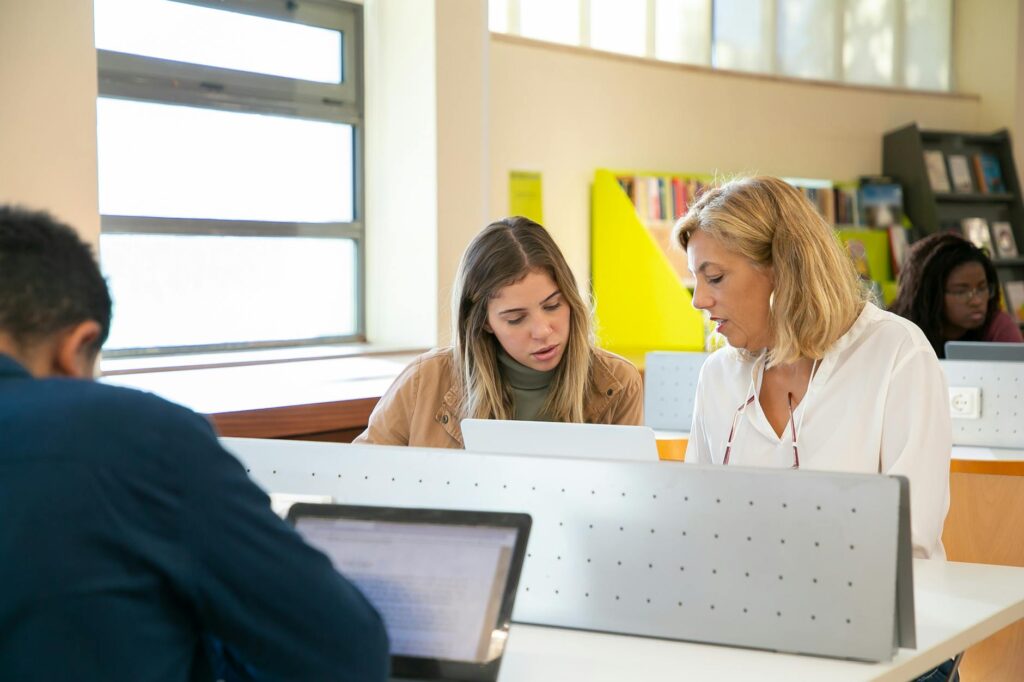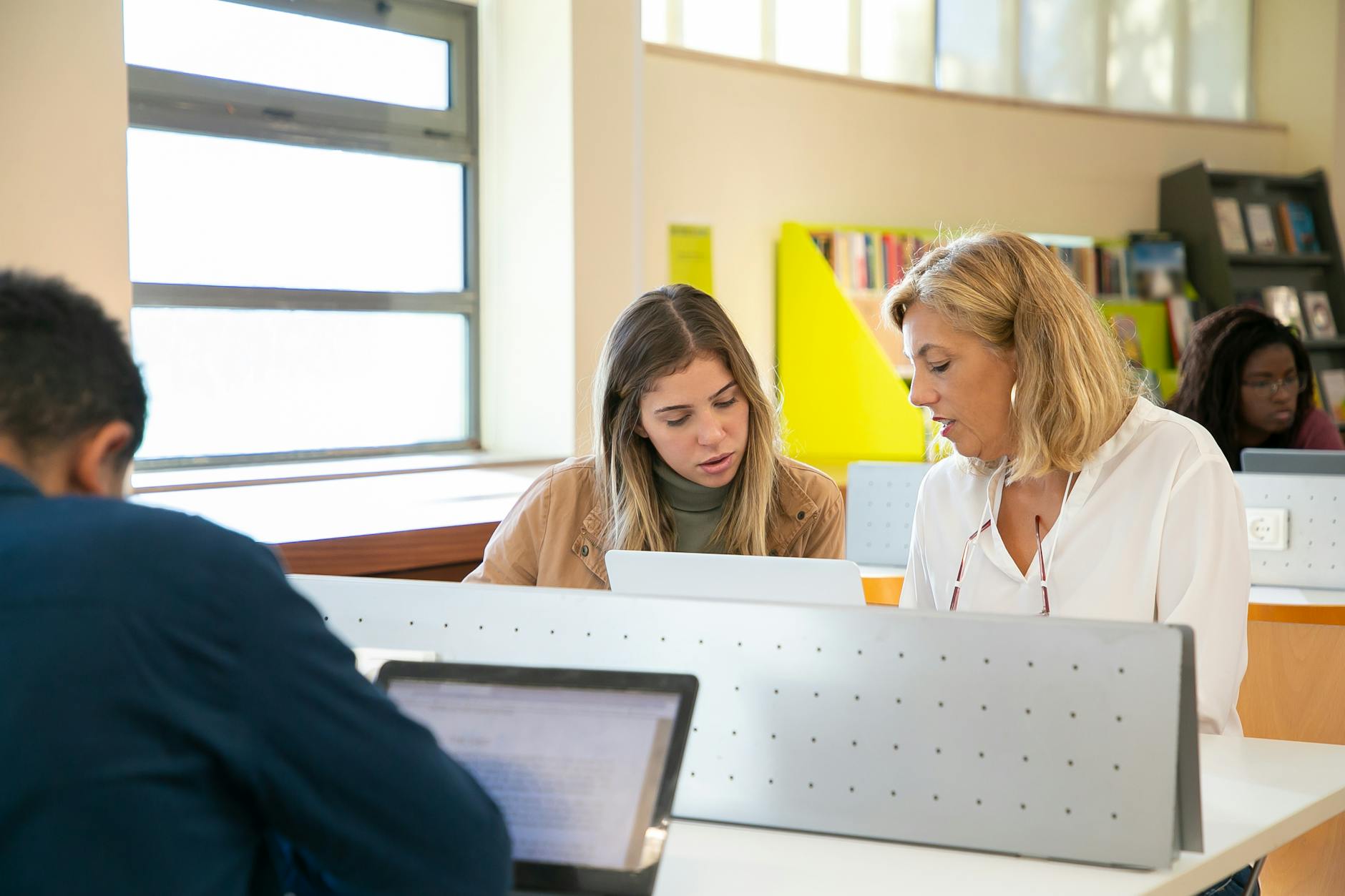What is peer tutoring systems?

What is peer tutoring systems?
Peer tutoring systems serve as a bridge in educational settings, connecting students through collaborative learning experiences. These systems not only enhance academic performance but also foster personal growth and improve social interactions among students. By engaging in peer tutoring, both tutors and tutees benefit from a shared learning environment that enriches the educational experience.
Defining Peer Tutoring Systems
At its core, peer tutoring is an educational practice where students teach and support each other. This method creates a dynamic environment of mutual learning. In a peer tutoring system, students, often referred to as tutors, assist their fellow classmates, known as tutees, in understanding complex subjects or developing new skills.
What is Peer Tutoring?
Peer tutoring is a structured form of learning where one student helps another improve their understanding of specific subjects or skills. This approach can take various forms, from informal study groups to formalized programs within schools. The central idea is to leverage the strengths of one student to aid another, thereby enhancing the learning process for both individuals involved.
Key Components of Peer Tutoring Systems
Several essential elements contribute to the effectiveness of peer tutoring systems:
-
Tutor-Tutee Relationships: Effective peer tutoring relies heavily on the relationship between the tutor and tutee. Trust and communication are crucial for creating an open and supportive learning environment.
-
Training Programs: Preparing tutors through training programs ensures they have the necessary skills to teach effectively. This training often includes learning how to explain concepts clearly and engage their peers in meaningful discussions.
-
Session Structures: Well-organized tutoring sessions can significantly impact learning outcomes. Establishing a clear structure helps keep both the tutor and tutee focused on specific goals during their time together.

Photo by Kampus Production
Benefits of Peer Tutoring Systems
Integrating peer tutoring systems into educational frameworks offers numerous benefits for both tutors and tutees.
Enhanced Learning Outcomes
Research shows that students involved in peer tutoring often achieve better academic performance than those who do not participate. This improvement stems from the active engagement that comes from teaching and learning with peers. When students explain concepts to each other, they solidify their understanding and can often grasp complex material more effectively. For example, a study highlighted in PeerTutors.com suggests that peer tutoring fosters deeper understanding and retention of information.
Improved Social Skills and Confidence
Peer tutoring is not just about academics; it also plays a vital role in developing social skills and boosting self-esteem. Tutors often feel a sense of responsibility and leadership, which enhances their confidence. Tutees, on the other hand, benefit from a supportive environment where they can ask questions without fear of judgment. This interaction builds communication skills and encourages a collaborative spirit among students, as discussed in St. John’s University.
Cost-Effectiveness
Compared to traditional tutoring methods, peer tutoring is often a more affordable option. Schools can implement these systems using existing student resources, significantly reducing the costs associated with hiring professional tutors. This approach not only saves money but also utilizes the talents of students who are often eager to help their classmates succeed.
Implementing Peer Tutoring Systems
Setting up an effective peer tutoring system requires careful planning and execution. Here are practical steps for schools or organizations looking to establish these systems.
Identifying Needs and Objectives
The first step in implementing a peer tutoring system is assessing the specific needs of the students. What subjects require extra support? What skills are students struggling to master? Clearly defining objectives will help shape the structure and focus of the tutoring program.
Recruiting and Training Tutors
Selecting the right tutors is crucial for success. Schools should look for students who not only excel academically but also possess good communication skills and a willingness to help others. Once identified, tutors should undergo training that equips them with effective teaching strategies and techniques.
Evaluating Success and Impact
It’s essential to monitor the effectiveness of the peer tutoring system continually. This can be achieved through surveys, academic performance tracking, and feedback sessions. Regular evaluation helps identify areas for improvement and ensures that the program meets its objectives.
Challenges and Solutions in Peer Tutoring
While peer tutoring systems present many benefits, they also come with challenges that may affect their success.
Addressing Mismatches in Skill Levels
One significant challenge is ensuring compatibility between the skill levels of tutors and tutees. Mismatches can lead to frustration for both parties. To address this, schools can implement a matching system based on academic performance and personal interests. This method ensures that tutees receive help from tutors who are not only knowledgeable but also relatable.
Maintaining Engagement and Accountability
Keeping participants motivated can be difficult in peer tutoring programs. Strategies to maintain engagement include setting clear goals, providing incentives for both tutors and tutees, and regularly reviewing progress. Creating a community atmosphere encourages students to stay committed to their roles.
Conclusion
Peer tutoring systems play a vital role in modern education, enhancing academic performance while promoting personal development. By fostering collaboration among students, these systems create opportunities for deeper learning, improved social skills, and cost-effective solutions. As schools explore new methods of enhancing education, peer tutoring stands out as a practical and impactful strategy worth considering. Embracing this approach can lead to a supportive and enriching learning environment for all students involved.